Featured Book: Two of Everything
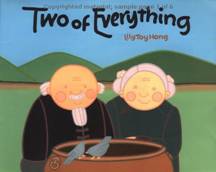
Two of Everything by Lily Toy Hong recounts a Chinese folk tale. The farmer finds a magic pot which doubles everything that is put into it. This humorous story is a great introduction to function machines and input/output tables as teachers make the transition to the "doubling pot" and recording information in an input/output table.
Next, teachers change the rule for the magic pot and keep it secret. Students supply input numbers and the teacher records the output numbers for each. Students try to guess the magic pot's current rule. This could then be extended to a growing pattern by simply using the last output as the next input, applying the rule and repeating the process.
Download the  Magic Pot Workmat for students to use in sheet protectors.
Magic Pot Workmat for students to use in sheet protectors.
See  5 Coins and the Magic Doubling Pot or 1000 Coins for another take on this growing pattern problem that challenges students to figure out which is the best deal.
5 Coins and the Magic Doubling Pot or 1000 Coins for another take on this growing pattern problem that challenges students to figure out which is the best deal.
One Grain of Rice
One Grain of Rice: A Mathematical Folktale, illustrated by Demi, introduces the power of doubling as the main character outsmarts others by asking for just one grain of rice the first day. Each successive day she will get double the amount of the day before. Students are always amazed at how quickly this pattern grows.
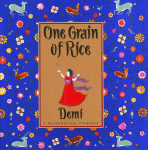
See detailed lesson plan for  Find a Pattern with "One Grain of Rice" which includes PDF handouts.
Find a Pattern with "One Grain of Rice" which includes PDF handouts.
 The Most Popular Food in the World: Rice challenges students to go beyond the obvious in this folktale and figure out how many people the rice would feed, etc., weaving measurement and real-life applications into extensions of this folktale. Several different level challenges are available on the site to best meet the needs of different students in middle school math classes.
The Most Popular Food in the World: Rice challenges students to go beyond the obvious in this folktale and figure out how many people the rice would feed, etc., weaving measurement and real-life applications into extensions of this folktale. Several different level challenges are available on the site to best meet the needs of different students in middle school math classes.
See  The Million $ Mission for a modern day job offer investigation which challenges students to identify the best payment plan.
The Million $ Mission for a modern day job offer investigation which challenges students to identify the best payment plan.
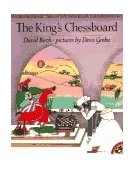
The King's Chessboard
The King's Chessboard, by David Birch, also introduces the power of doubling as the wise man outsmarts the king by asking for just one grain of rice on the first square of the chessboard. For each successive square he will get double the amount of the previous square. Although this request initially sounds meager, the king soon discovers that he has been outsmarted as he tries to supply the rice for each of the 64 squares of the chessboard.
See the  King's Chessboard Solution.
King's Chessboard Solution.
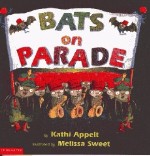
Bats on Parade
Bats on Parade by Kathi Appelt is a literary introduction to square numbers and the patterns they form as square arrays. The bats march in parade formation and different sections of the band, being different sizes, march in different arrays: "In nine rows of nine those trombones reported, while there, right behind them, the tubas retorted." The pictures and rhyme reinforce the mathematics of the patterns and teachers can easily ask students to predict how many bats will be in the next section or ask them to figure out how many bats are in the whole band before reading those pages. Add this book to your collection of problem-solving literature prompts.
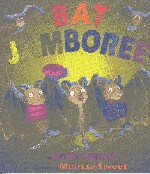
Bat Jamboree
Bat Jamboree by Kathi Appelt introduces the triangular number pattern as bats assemble for the final number beginning with 10 bats in the bottom row, 9 in the next row, etc. to the very top row with 1 bat. Students are introduced to the 55 bats in formation and their various acts but the book "isn't over until the bat lady sings." Students will enjoy this introduction to an important mathematical pattern.
- Teachers can find many problems that build upon this triangular number pattern and extend the experience.
- Look for several penguin problems in the Winter Math Activities that will be available on November 1st. This set of problems builds on the triangular pattern and is sequenced to develop student understanding of the pattern and student use of appropriate tables and charts to organize and record data.
